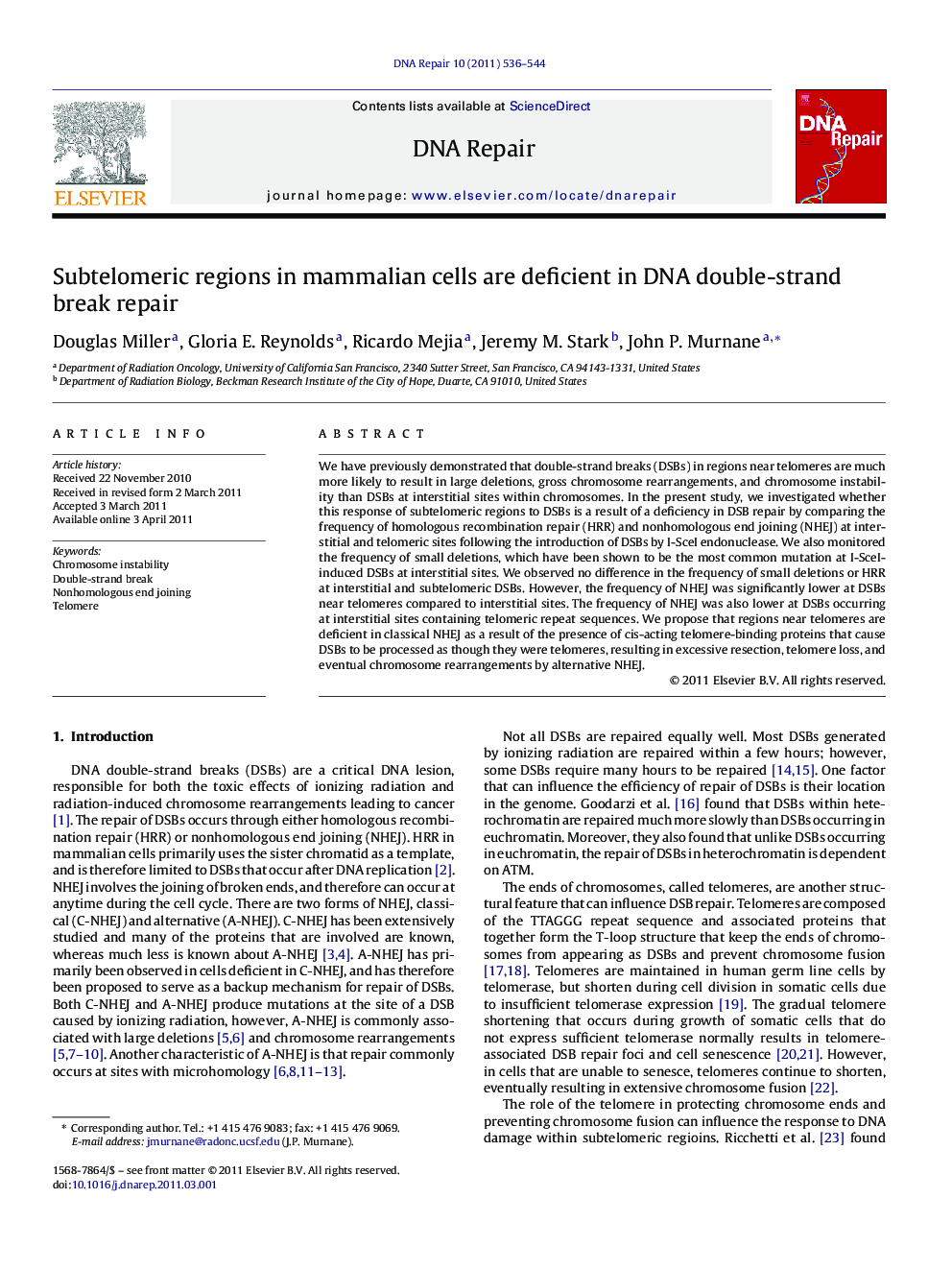| Article ID | Journal | Published Year | Pages | File Type |
|---|---|---|---|---|
| 1980840 | DNA Repair | 2011 | 9 Pages |
We have previously demonstrated that double-strand breaks (DSBs) in regions near telomeres are much more likely to result in large deletions, gross chromosome rearrangements, and chromosome instability than DSBs at interstitial sites within chromosomes. In the present study, we investigated whether this response of subtelomeric regions to DSBs is a result of a deficiency in DSB repair by comparing the frequency of homologous recombination repair (HRR) and nonhomologous end joining (NHEJ) at interstitial and telomeric sites following the introduction of DSBs by I-SceI endonuclease. We also monitored the frequency of small deletions, which have been shown to be the most common mutation at I-SceI-induced DSBs at interstitial sites. We observed no difference in the frequency of small deletions or HRR at interstitial and subtelomeric DSBs. However, the frequency of NHEJ was significantly lower at DSBs near telomeres compared to interstitial sites. The frequency of NHEJ was also lower at DSBs occurring at interstitial sites containing telomeric repeat sequences. We propose that regions near telomeres are deficient in classical NHEJ as a result of the presence of cis-acting telomere-binding proteins that cause DSBs to be processed as though they were telomeres, resulting in excessive resection, telomere loss, and eventual chromosome rearrangements by alternative NHEJ.
